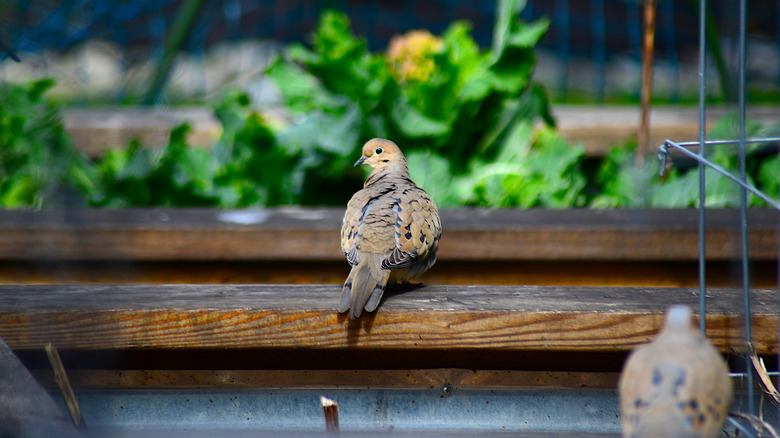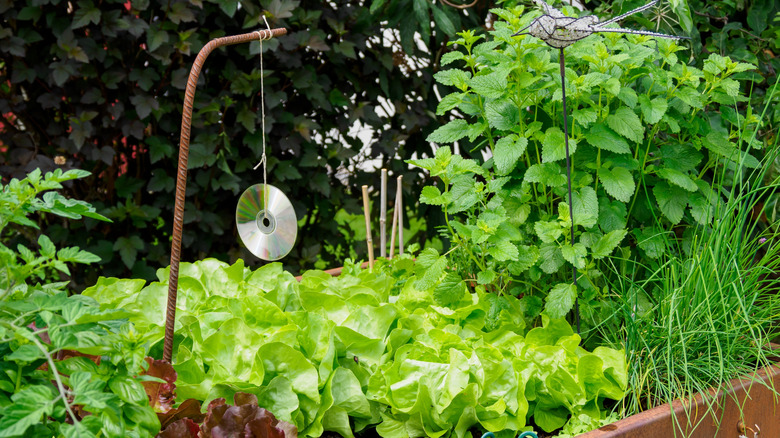Will Decorating Your Garden With Disco Balls Help Keep Birds Away?
We may receive a commission on purchases made from links.
You might normally love bird watching, but perhaps lately, all you can think is, fly, robin, fly! The birds going after your newly planted seeds or just-about-to-be-picked produce in your garden seem to be gleefully chirping to the tune of "Ain't No Stoppin' Us Now." If you can't go for that, it's time to hustle, and keep them away with the addition of a few fun, flashy disco balls in your garden.
Humans have tried to keep birds away from their crops for ages. Egyptians recorded the use of scarecrows along the Nile to frighten birds away from wheat fields 3,000 years ago. Since then, humankind has tried to use many tips and tricks to prevent birds from munching on garden fruit, vegetables, or newly planted seeds. The list includes ideas like owl statues, smelly sprays, and spinning distractions. You may have tried some of the tips, but the allure of disco balls is that they're also whimsically amusing and decorative in your garden.
Hanging a mirror or other reflective device in your garden has been shown to keep birds away, possibly because of their aversion to new things, the reflected light, or their thought that the image in the mirror is a rival bird. But be aware that this brilliant trick that'll keep crows from eating your vegetable garden can be dangerous for the birds; they could fly into the mirrors or, thinking it's a foe, hurt themselves "fighting" it. With disco balls, though, there is cause for celebration! Birds aren't likely to fly into them nor think they are enemies since the mirrors are too small to create a life-like reflection.
Don't stop 'til you get enough disco balls to keep birds out of your garden
Testing the disco ball deterrent method is simple. The concept is that shiny objects scare away birds. With multiple mirrored surfaces, the tiny globes catch and reflect a lot of light. You can use any size disco ball, but small ornament-sized ones might be best, like the 40-pack Suwimut Mirror Disco Balls. They're approximately 2 inches in diameter, and can be hung on mini shepherd's hooks, like FEED GARDEN Adjustable Shepherd Hooks.
Other than the amusement that disco balls can bring to your garden beds and containers, you might wonder whether reflectors really work to keep birds away from areas of your yard. Experts say that reflective objects can work, but to achieve the best effect, put them where their many reflective surfaces can easily capture sunlight. On cloudy days, the wind can create movement, so some light might still flash on the disco balls.
You also don't want to let the birds become too comfortable around your discotheque decor. Scatter the mirrored globes and move them around to keep birds from growing too accustomed to them. One way is to begin by placing the balls in different places and at different heights around your garden, then switch it up a few times per week. Also, there's some indication that larger birds are less frightened by the flashing light displays (perhaps they just want to dance to the music). If a few birds still shimmy past the disco balls, remember that some avians eat the pests that eat what you plant. Let insect-gobblers, like bluebirds and sparrows, do their groove thing.
Try these other methods to deter birds and keep your garden stayin' alive
Gardeners often try a lot of methods to keep birds out. You might want deterrents that are effective, easy, and inexpensive, but nothing is perfect. Cute as the disco balls are, they come with a cautionary note: The tiny pieces of shiny metal or glass that make the disco balls reflect light are dangerous to birds if ingested. If that worries you, and you still want to try the disco ball method, one option is to use a similar-looking dog toy, like HyDren Disco Plush Balls, that is safer, though maybe not quite as reflective and definitely not as economical.
If you decide disco balls are best left to dance floors, you can still keep the birds away through any of the traditional methods, such as netting. Be aware, though, that there is a downside of using netting to protect your garden; birds and small animals can sometimes get caught in it. You could cover ripening produce with a glass cover, which would still let in sunlight, but keep birds away. Glass jars may be the hero of the garden when you use them to protect your seedlings from birds, but be careful of the time of year that you employ this method. The glass will hold heat and raise the temperature underneath it significantly, which is great on a cold day, but deadly if it's warm since temps under the dome can rise by up to 40 degrees Fahrenheit. In the end, if your tactics keep the birds away, at harvest, you'll be singing, "That's the way (I like it)!"

